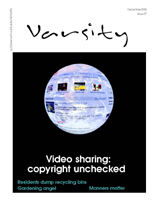


Periscope
Survival of the fittest
The real challenge for traditional media posed by YouTube is to find ways to attract users rather than putting more effort on protecting their copyrighted materials, according to TIME magazine, which named the California-based website the ¡§Invention of the Year¡¨ for 2006. YouTube contains more than 100 million videos and has 65,000 new videos uploaded by its users worldwide every day.
To cope with the challenge, traditional media may have to work with new media in the future, said Anthony Fung Ying-him, an assistant professor at the Chinese University of Hong Kong¡¦s school of journalism and communication.
¡§It is an era of convergence. That is, traditional media may also do new media projects and both media share similar programmes. So in future, the same
content will be used in different kinds of media,¡¨ said Dr Fung, who researches on new media.
Dr Fung said in Hong Kong , video-sharing websites would not replace traditional media, just as television did not replace newspaper.
¡§Compared with traditional media, video-sharing websites are more active because these websites are searchable. On YouTube, users can search for their favourite videos and even upload their own videos. It is more active than traditional media,¡¨ the academic said.
Yet, video-sharing websites face the problem of credibility as viewers have no ways to verify the sources of information. It is hard to confirm the truthfulness of the videos, Dr Fung said.
The quality of videos is another worry. ¡§We all know that it¡¦s difficult to find high-quality production in YouTube. Despite the quality problem, YouTube is still a new platform for people to produce and release their works,¡¨ he said.
Realising the problem of low-quality videos, Metacafe, another leading video-sharing site, tries to improve the quality by filtering and ranking videos uploaded by its users. The site, which has attracted nearly 17 million unique viewers viewing 400 million videos each month, recently launched a Producer Rewards programme to attract the production of high-quality videos. Users will get US$5 for having every 1,000 viewers after their clips have obtained 20,000 hits and has a rating of above three points.
Although videos on those sharing websites are in a lower quality compared with mainstream media, Dr Fung said, their variety is wide and give more choices to audiences.
Traditional media have to change and improve to stay competitive, he said.
